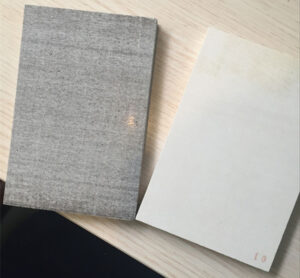 An MGO (Magnesium Oxide) board is generally considered a safe and environmentally friendly building material, often marketed as a greener alternative to traditional options like gypsum drywall and cement board.
An MGO (Magnesium Oxide) board is generally considered a safe and environmentally friendly building material, often marketed as a greener alternative to traditional options like gypsum drywall and cement board.
Here is a detailed breakdown of its safety and environmental attributes, along with a crucial safety consideration:
Safety and Health Profile
MGO boards have several characteristics that make them a safe choice for building occupants and workers:
Non-Toxic Composition: High-quality MGO boards are free from harmful substances commonly found in other materials, including:
- Formaldehyde
- Asbestos
- Volatile Organic Compounds (VOCs)
- Crystalline Silica
Improved Indoor Air Quality: Since they do not off-gas VOCs or other toxic fumes, MGO boards contribute to a healthier indoor environment, which is beneficial for people with asthma or chemical sensitivities
Superior Fire Resistance: MGO is naturally non-combustible. It has a high melting point and a very high fire rating (often a 0/0 rating on the ASTM E84/UL 723 Flame Spread and Smoke Developed Index). In a fire, it does not release toxic smoke.
Mold and Pest Resistance: Being an inorganic, mineral-based material, MGO does not provide a food source for mold, mildew, fungus, or pests like termites and carpenter ants
Environmental Friendliness
MGO boards offer several significant environmental benefits:
- Low-Energy Manufacturing: The production of magnesium oxide typically requires less energy (sometimes 25% to 50% less) compared to materials like Portland cement or calcium hydroxide, leading to a lower manufacturing carbon footprint.
- CO₂ Sequestration: During the curing process, MGO boards actively capture and sequester carbon dioxide., which helps reduce greenhouse gas emissions.
- Abundant Raw Materials: Magnesium oxide is derived from magnesium, which is an abundant, naturally occurring mineral often sourced from seawater or brine pools.
- Recyclability: MGO boards are often described as fully recyclable or “nutritional waste.” They can be crushed and repurposed into new boards or ground up and mixed into soil as a nutrient, minimizing landfill waste and promoting a circular economy.
- Durability and Energy Efficiency: Their resistance to moisture, mold, and pests results in a longer product lifespan, reducing the need for frequent replacement. Additionally, their good thermal insulation properties can help reduce a building’s reliance on heating and cooling systems.
mportant Safety Consideration: The “Weeping” Issue
While generally very safe, there is one major caveat that consumers should be aware of, which relates to the board’s binder:
- Magnesium Chloride Binder: Older or lower-quality MGO boards may use magnesium chloride as a binding agent. This compound is hygroscopic, meaning it absorbs moisture from the air, especially in high-humidity environments.
- Risk: This absorption can cause the board to “weep” or “sweat,” releasing a salty, corrosive liquid (leachate). This liquid can cause severe corrosion of metal fasteners, steel studs, and aluminum components, potentially compromising the structural integrity of the assembly over time.
- Solution: Modern, high-quality MGO boards use a Magnesium Sulfate binder instead. This formulation is not hygroscopic and eliminates the risk of weeping and corrosion, making it a much safer and more reliable choice, particularly in humid or exterior applications.
In summary, to ensure you are using a safe and reliable product, it is critical to confirm that the MGO board you choose is a high-quality, modern, and Magnesium Sulfate-based formulation.
OCT
2025
